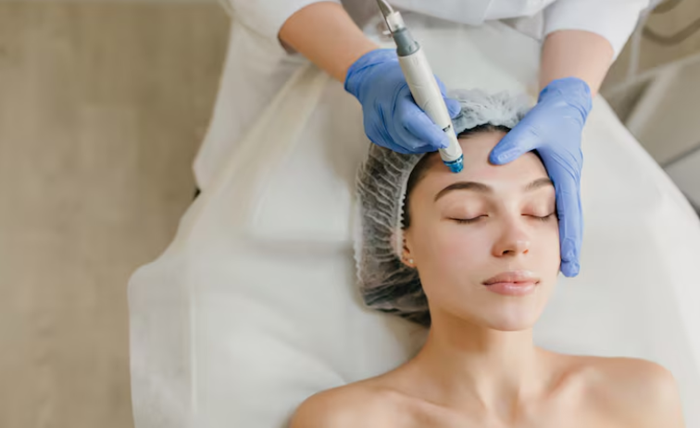In the realm of aesthetic medicine, skin rejuvenation has stood as a hallmark for combatting the signs of ageing and improving skin health. The continuous evolution of dermatological technologies has led to the advent of treatments which promise significant results without the need for invasive procedures. Among these advancements is the introduction of High-Intensity Focused Ultrasound (HIFU) treatments, a non-invasive therapeutic technique that’s swiftly gaining momentum within the beauty industry. This article explores the transformative impact of HIFU treatment on skin rejuvenation.
Understanding HIFU Technology
HIFU technology is rooted in the precision of ultrasound energy. Unlike other modalities that treat the superficial skin layers, HIFU bypasses the surface and delivers targeted energy into deeper tissues. This enables a cascade of regenerative effects without disrupting the epidermis. HIFU is best known for its ability to stimulate collagen production, thus improving skin elasticity and firmness.
The Mechanism Behind HIFU
The treatment utilises focused ultrasound waves which converge beneath the skin, generating a controlled heating effect. This heat is focalised at temperatures that induce thermal coagulation at specific depths, effectively jumpstarting the body’s natural healing processes. The outcomes include neocollagenesis—the production of new collagen—and the strengthening of existing collagen fibres, rendering a lifting and tightening effect on the skin.
The Scope of HIFU in Dermatology
HIFU’s versatility is one of its strongest attributes. It has shown efficacy in addressing various skin concerns, from wrinkles and fine lines to mild and moderate skin laxity. The therapy is commonly used for facial contouring, reducing the appearance of a double chin, and tightening sagging skin in the neck and décolletage areas. Further, its capacity to reach different tissue layers allows customisation of the treatment according to the individual’s skin condition and goals.
The Advantages of Non-Invasive Treatment
One of the principal advantages that HIFU presents over traditional cosmetic procedures is its non-invasive nature. It requires no incisions, no anaesthesia, and is free from substantial downtime. Patients can return to their typical routines shortly after a session. This convenience, coupled with its relatively swift procedure time, makes HIFU an appealing alternative for those wishing to avoid surgery or prolonged recovery periods.
What to Expect During HIFU Treatment
During a HIFU session, the practitioner will apply an ultrasound gel and place the HIFU device against the skin. The device is then maneuvered to target specific areas of concern. Patients might experience a slight sensation of heat or tingling as the ultrasound energy is delivered, but this is generally well-tolerated.
Patient Candidacy for HIFU
Individuals presenting early signs of ageing, such as skin laxity and fine lines, can be ideal candidates for HIFU treatments. The procedure can offer preventative benefits when done before signs of ageing become pronounced. However, it’s important to have realistic expectations and to understand that HIFU is not a replacement for a surgical facelift; rather, it is an alternative for those seeking a non-surgical approach to skin rejuvenation.
Complementing HIFU with a Skincare Routine
For optimised results, combining HIFU with a well-curated skincare regimen is recommended. Topical products that nourish and protect the skin can enhance the regenerative effects of HIFU. It’s critical to ensure that one follows a routine tailored to their specific skin needs, emphasising hydration, sun protection, and nutrient-rich formulations.
Post-Treatment Considerations
Following HIFU treatment, minor redness or swelling may be present but typically resolves within a few hours. Patients are advised to maintain hydration and avoid excessive sun exposure during the healing process. While HIFU does not necessitate a prolonged recovery period, adhering to post-procedure guidelines can maximise its benefits.
The Result Timeline
The results of HIFU are not immediate; they unfold over the course of several months as new collagen is formed and matured. It is not uncommon for significant improvements to be observed two to three months post-treatment, with effects potentially lasting up to a year or more, depending on individual ageing processes and lifestyle factors.
Considerations Before Undertaking HIFU
Prior to proceeding with a HIFU treatment, a detailed consultation with a licensed practitioner is vital. A thorough skin analysis and evaluation of medical history ensure the safety and appropriateness of the procedure. It is also key to discuss any concerns or expectations to establish a clear treatment plan.
Assessing the Safety Profile of HIFU
HIFU is renowned for its safe track record in medical applications, which extends into its use for aesthetic purposes. Nevertheless, it is imperative to seek treatment at a reputable clinic with qualified professionals who use FDA-cleared devices. Clear communication and experienced practice are crucial elements in avoiding potential complications and ensuring a satisfactory outcome.
The Role of Continuous Innovation in Skin Rejuvenation
As aesthetic technology progresses, new methods are continually developed to provide safe, effective, and less invasive ways of maintaining skin health and appearance. HIFU is a testament to this ongoing innovation, proving to be a game-changer in non-surgical skin tightening and lifting. Professionals are consistently exploring the expanding horizons of HIFU applications, anticipating even further advancements.
HIFU and Its Place in the Future of Aesthetics
The demand for non-surgical aesthetic treatments like HIFU is ever-growing, as individuals seek more convenient and minimally disruptive options for maintaining a youthful appearance. HIFU’s ability to produce natural-looking results without the downsides associated with surgery underscores its potential longevity within the pantheon of skin rejuvenation treatments.
In Summary
HIFU treatment represents a significant stride in the realm of non-invasive skin rejuvenation. As a safe, convenient, and effective alternative to surgical procedures, it has the potential to satisfy the aesthetic desires of many. While HIFU may not entirely eliminate the need for surgical intervention in some cases, its role in promoting skin health and restoring youthful contours is irrefutable. By embracing the trend towards less invasive techniques, we might witness a shift in the paradigms of beauty and ageing, with HIFU at the forefront of this revolution.


